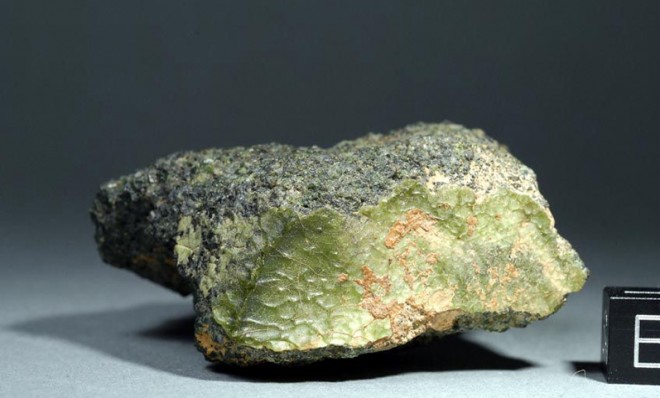The mysterious green meteorite fragment from... Mercury?
Sorry, folks. It probably ain't kryptonite

You know what they say: Men are from Mars, women are from Venus, and green meteorites are from… Mercury?
Just ask meteorite scientist Anthony Irving. At the 44th annual Lunar and Planetary Science Conference in Texas this month, Irving presented evidence that a mysterious green space rock found in Morocco in 2012 was, weirdly, blasted at Earth's direction from the inner solar system. If the meteorite fragment — labeled NWA 7325 — is what Irving says it is, it may just be the first-ever meteorite to pelt our planet from Mercury.
The fragment is part of a larger group of 35 meteorite shards discovered last year. According to Space.com, the samples are "ancient, with Irving and his team dating the rocks to an age of about 4.56 billion years."
The Week
Escape your echo chamber. Get the facts behind the news, plus analysis from multiple perspectives.

Sign up for The Week's Free Newsletters
From our morning news briefing to a weekly Good News Newsletter, get the best of The Week delivered directly to your inbox.
From our morning news briefing to a weekly Good News Newsletter, get the best of The Week delivered directly to your inbox.
So how do we know the meteorite is from Mercury, and not, say, Krypton? Well, meteorites are often imbued with chemical signatures distinctive of where they came from. In January, a Martian meteorite nicknamed "Black Beauty" was determined to contain trace elements of Mars' atmosphere (including water!). And space rocks from the asteroid Vesta — which is estimated to generate 5 percent of all meteorites found on Earth — contain the mother rock's colorful, geological fingerprints.
NWA 7325 is unlike anything space researchers have seen before, leading them to theorize that it came from Mercury. For starters, it appears to have been ejected from a planet that had "flowing magma on its surface at some point in history," says Space.com, since the rock could have come together as "scum" on top of the magma. (Check one point, Mercury.) The rock's "lower magnetic intensity" also resembles the cosmic yield that NASA's Messenger spacecraft has detected from the planet itself. (Check two.) And lastly, the fragment is strangely low in iron — just like a certain first-rock-from-the-sun. (Check three.)
And without any real-like Kryptonians to test the green meteorite's superpower-stopping abilities, its Mercurial origins may just have to do.
A free daily email with the biggest news stories of the day – and the best features from TheWeek.com
-
 In Suriname, the spectre of Dutch slave trade lingers
In Suriname, the spectre of Dutch slave trade lingersUnder the Radar Dutch royal family visit, the first to the South American former colony in nearly 50 years, spotlights role of the Netherlands in transatlantic trade
-
 Political cartoons for December 7
Political cartoons for December 7Cartoons Sunday’s political cartoons include the Trump-tanic, AI Santa, and the search for a moderate Republican
-
 Trump’s poll collapse: can he stop the slide?
Trump’s poll collapse: can he stop the slide?Talking Point President who promised to ease cost-of-living has found that US economic woes can’t be solved ‘via executive fiat’